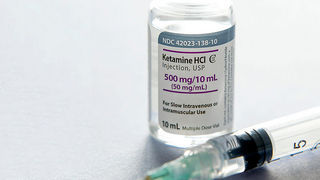Ketamine
How Similar Are Near-Death Experiences to Acid Trips?
New research suggests that there is something to this idea.
Posted March 26, 2019 Reviewed by Matt Huston
Near-Death Experiences (NDEs) have long fascinated us. In part, this is due to our lack of understanding of what causes them. On one view, they are caused by the literal separation of the mind from the body. People float above themselves, travel through tunnels towards the light, visit with deceased relatives, and so on because their consciousness has been released from its bodily prison. On another view, NDEs are the result of physiological changes in the body, perhaps in relation to its environment. The increased anxiety and stress that accompanies a brush with death trigger the release of chemicals in the brain, resulting in an altered state of consciousness.
A recent study appears to provide further support for this second view. Prompted by the well-documented similarities between reports of NDEs and reports of drug-induced experiences, such as acid trips, researchers sought to investigate further. They compared 625 NDE narratives with over 15,000 reports of experiences following the use of 165 psychoactive substances. They assumed that similar experiences would be described using the same concepts with similar frequency. And they were sensitive to the historical and sociological facts that NDE reports across time and culture contain many similar elements, as well as that many cultures and people have used psychoactive substances to explore phenomena related to death and dying.

One of their more interesting findings was that not all psychoactive substances produce experiences that resemble NDEs to a similar degree. In terms of general categories, hallucinogens engendered experiences more like NDEs than sedatives, stimulants, and antipsychotics. A bit more specifically, dissociative substances produced experiences that were most similar to NDEs. And in terms of particular substances, ketamine produced experiences most similar to NDEs.
Two comments about this are in order. First, as in many cases, there is an exception to the rule. LSD-induced experiences resembled NDEs due to cardiac arrest to a comparable degree as ketamine. This is worth remarking on because there is a significant strand of research on NDEs that focuses on cases due to cardiac arrest. Comparisons between this body of NDE reports and the phenomenology of substance-induced experiences may lead one to conclude that LSD trips are very similar to NDEs. The present study suggests that this is true, but only for a sub-class of NDEs.
A second comment has to do with the significance of this study for the investigation of possible physical explanations of NDEs. The finding that ketamine-induced experiences most closely resemble the phenomenology of NDEs is somewhat surprising, as much of the literature in this area has focused on DMT. One hypothesis has been that our brains release naturally occurring DMT as death closes in, causing experiences with the character and structure that NDE subjects report. The present study complicates this story. For example, they find evidence of a strong link between ketamine-induced experiences and a core feature of many NDEs, namely, the Out-of-Body Experience (OBE). They do not find as strong a link, however, between OBEs and DMT-induced experiences.
It will be interesting to see where future research goes from here, as researchers continue to pursue evidence of a link between aspects of our physiology and the phenomenology of NDEs.


